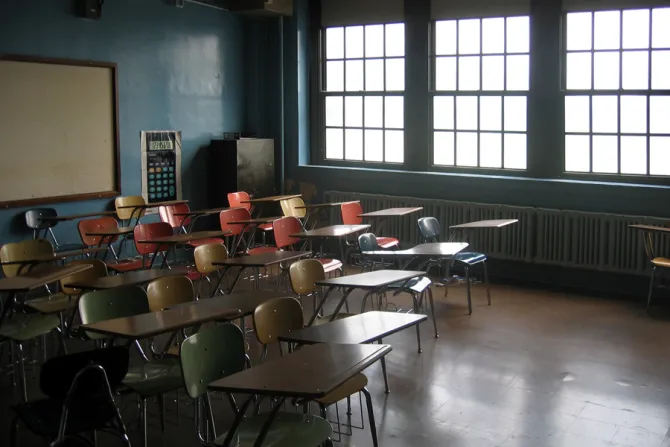New York City, N.Y., Mar 30, 2015 / 15:40 pm
Churches using New York City public school facilities for worship services are in limbo after the Supreme Court declined to review their case against a city prohibition on their doing so.
"Any community group can meet in New York City's school buildings during non-school hours for any purpose – except for religious groups meeting to worship God," Jordan Lorence, senior counsel with the legal group Alliance Defending Freedom, stated in reaction to the decision. ADF had petitioned the Supreme Court to review the case.
Lorence called the city's law "nothing more than religious segregation – the kind of segregation the mayor has said he opposes."
The law in question is a 20 year-old regulation of the New York City Board of Education that prohibits public school facilities from use for "religious worship services or as a house of worship."
Two pastors at the Bronx Household of Faith, Jack Roberts and Robert Hall, led the latest legal effort against this regulation. After their initial victory at the district court level, churches began using public school facilities.
The Second Circuit Court of Appeals reversed that decision last April. Now that the Supreme Court has refused to hear the case, the federal circuit court decision stands.
The question now is if churches using the facilities will be evicted. Mayor De Blasio stated last year that churches "deserve access" to the schools, but he has yet to overturn the board of education's law.
New York City allows for many uses of public school facilities, including by labor unions, dance recitals, community meetings, and even filming of television shows Law and Order and Sex and the City.
Churches have contributed much to the city's welfare, insisted ADF's senior counsel David Cortman, so the city should not single them out for refusal in use of public facilities.
"The Education Department's argument that it must ban worship services to protect children from religion – as though it were a disease – falls apart on many levels, not the least of which is how willing the city has been to accept the free help churches willingly offer," Cortman said.
The Second Circuit Court ruled last April that, contrary to the district court's ruling, the city did not have to allow the churches to use the school facilities under the First Amendment's Free Exercise clause and Establishment clause.
The two clauses state that "Congress shall make no law respecting an establishment of religion, or prohibiting the free exercise thereof."
The circuit court found that, while churches were using subsidized buildings for worship services, "the Free Exercise Clause, however, has never been understood to require government to finance a subject's exercise of religion."
The court also ruled that if the city thinks it risks a lawsuit based on the Establishment Clause for allowing religious services to take place in subsidized public schools, it can prohibit such services from taking place there so as to avoid appearing to "establish" a religion.
"History is replete with examples of churches using public buildings for worship," ADF responded in its petition for writ of certiorari, noting that "the framers of the Constitution attended church services in the U.S. Capitol building, churches met in the federal court in New York City during the Great Awakening, and 49 of 50 of the largest school districts in the nation allow such practices today."
In his lone dissent in the 2-1 federal court decision, Circuit Judge John M. Walker, Jr. argued that allowing churches to use the schools "is hardly the financing of that entity," and that prohibiting them from doing so violates the Free Exercise clause.
He added that fees are charged for use of the facilities for all groups, so the law "is not a government subsidy."
Furthermore, he argued that other religious activities are permitted in the schools by the city, such as meetings, hymn singing, and prayer, as long as it is not led by a religious figure. This undermines the city's case of not appearing to "establish" a religion, he said.



